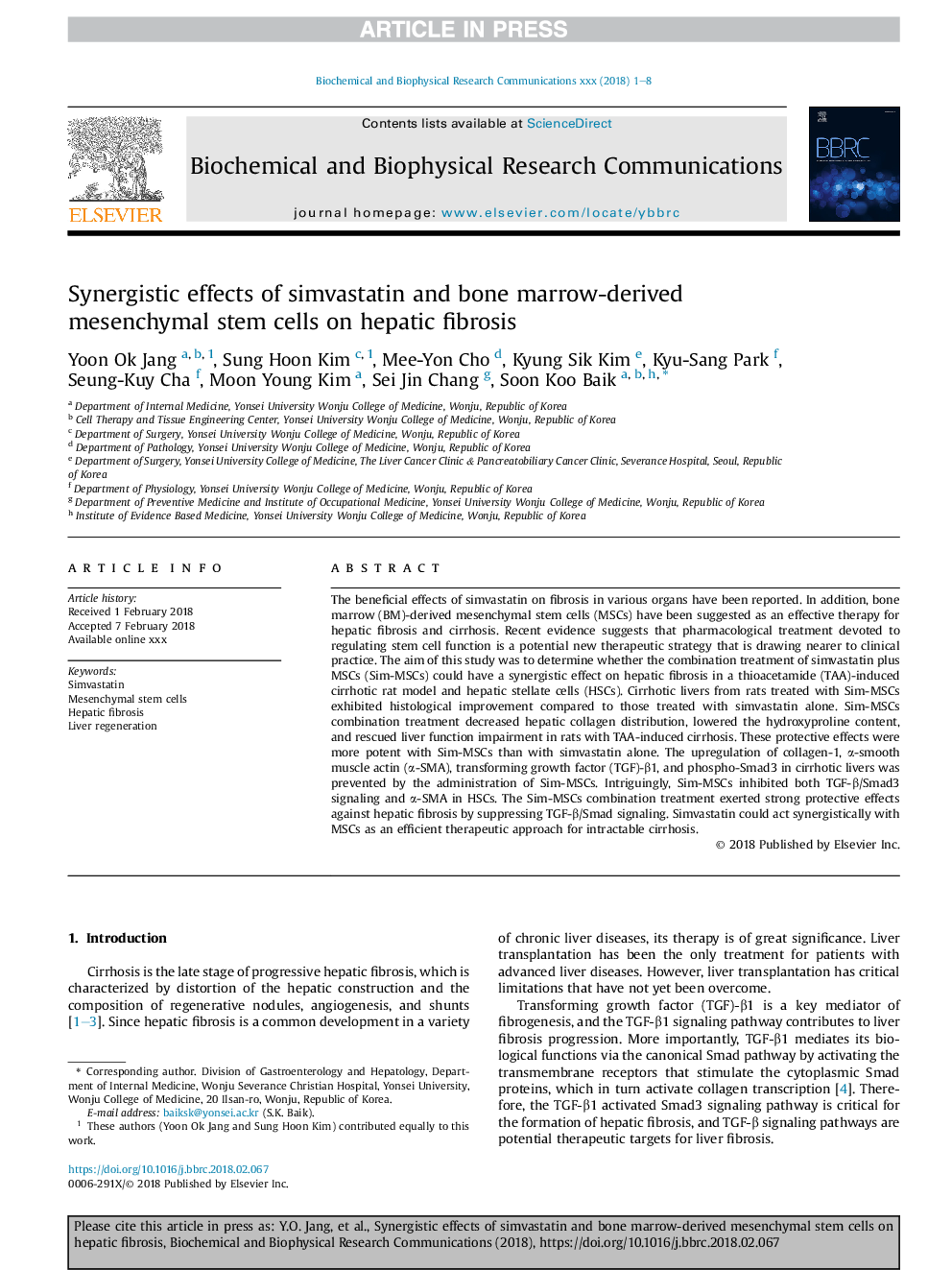| Article ID | Journal | Published Year | Pages | File Type |
|---|---|---|---|---|
| 8294308 | Biochemical and Biophysical Research Communications | 2018 | 8 Pages |
Abstract
The beneficial effects of simvastatin on fibrosis in various organs have been reported. In addition, bone marrow (BM)-derived mesenchymal stem cells (MSCs) have been suggested as an effective therapy for hepatic fibrosis and cirrhosis. Recent evidence suggests that pharmacological treatment devoted to regulating stem cell function is a potential new therapeutic strategy that is drawing nearer to clinical practice. The aim of this study was to determine whether the combination treatment of simvastatin plus MSCs (Sim-MSCs) could have a synergistic effect on hepatic fibrosis in a thioacetamide (TAA)-induced cirrhotic rat model and hepatic stellate cells (HSCs). Cirrhotic livers from rats treated with Sim-MSCs exhibited histological improvement compared to those treated with simvastatin alone. Sim-MSCs combination treatment decreased hepatic collagen distribution, lowered the hydroxyproline content, and rescued liver function impairment in rats with TAA-induced cirrhosis. These protective effects were more potent with Sim-MSCs than with simvastatin alone. The upregulation of collagen-1, α-smooth muscle actin (α-SMA), transforming growth factor (TGF)-β1, and phospho-Smad3 in cirrhotic livers was prevented by the administration of Sim-MSCs. Intriguingly, Sim-MSCs inhibited both TGF-β/Smad3 signaling and α-SMA in HSCs. The Sim-MSCs combination treatment exerted strong protective effects against hepatic fibrosis by suppressing TGF-β/Smad signaling. Simvastatin could act synergistically with MSCs as an efficient therapeutic approach for intractable cirrhosis.
Related Topics
Life Sciences
Biochemistry, Genetics and Molecular Biology
Biochemistry
Authors
Yoon Ok Jang, Sung Hoon Kim, Mee-Yon Cho, Kyung Sik Kim, Kyu-Sang Park, Seung-Kuy Cha, Moon Young Kim, Sei Jin Chang, Soon Koo Baik,
